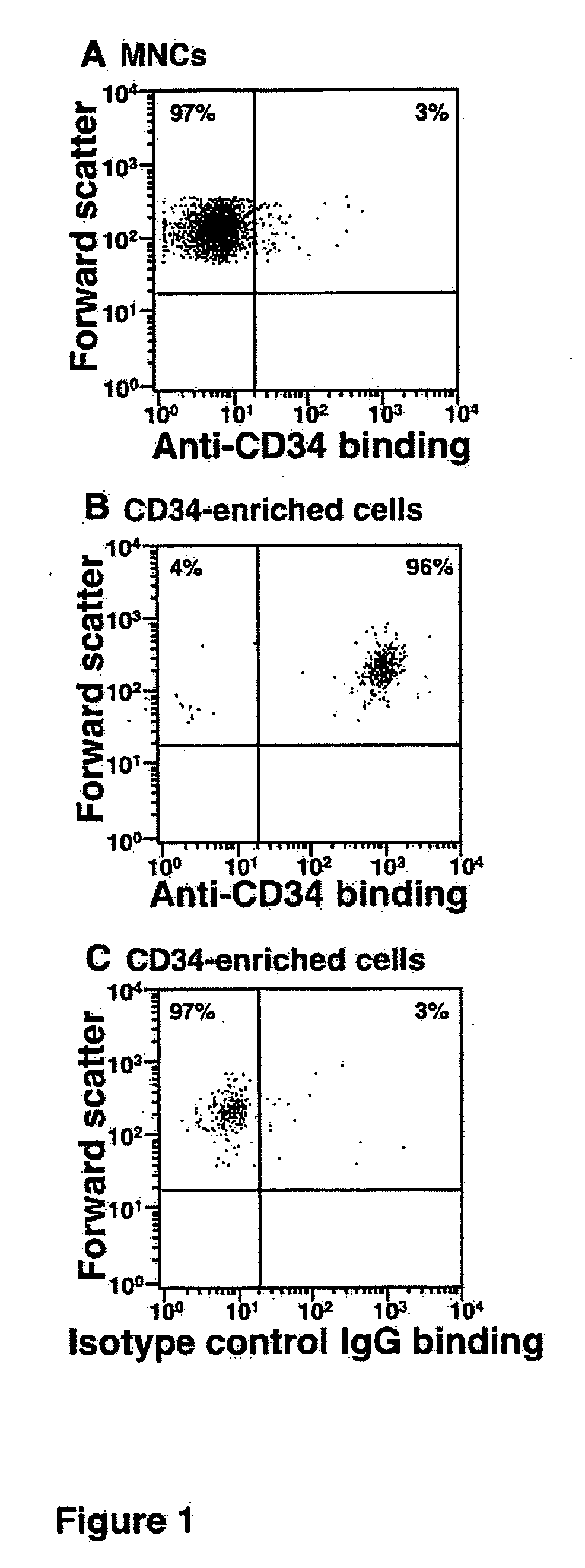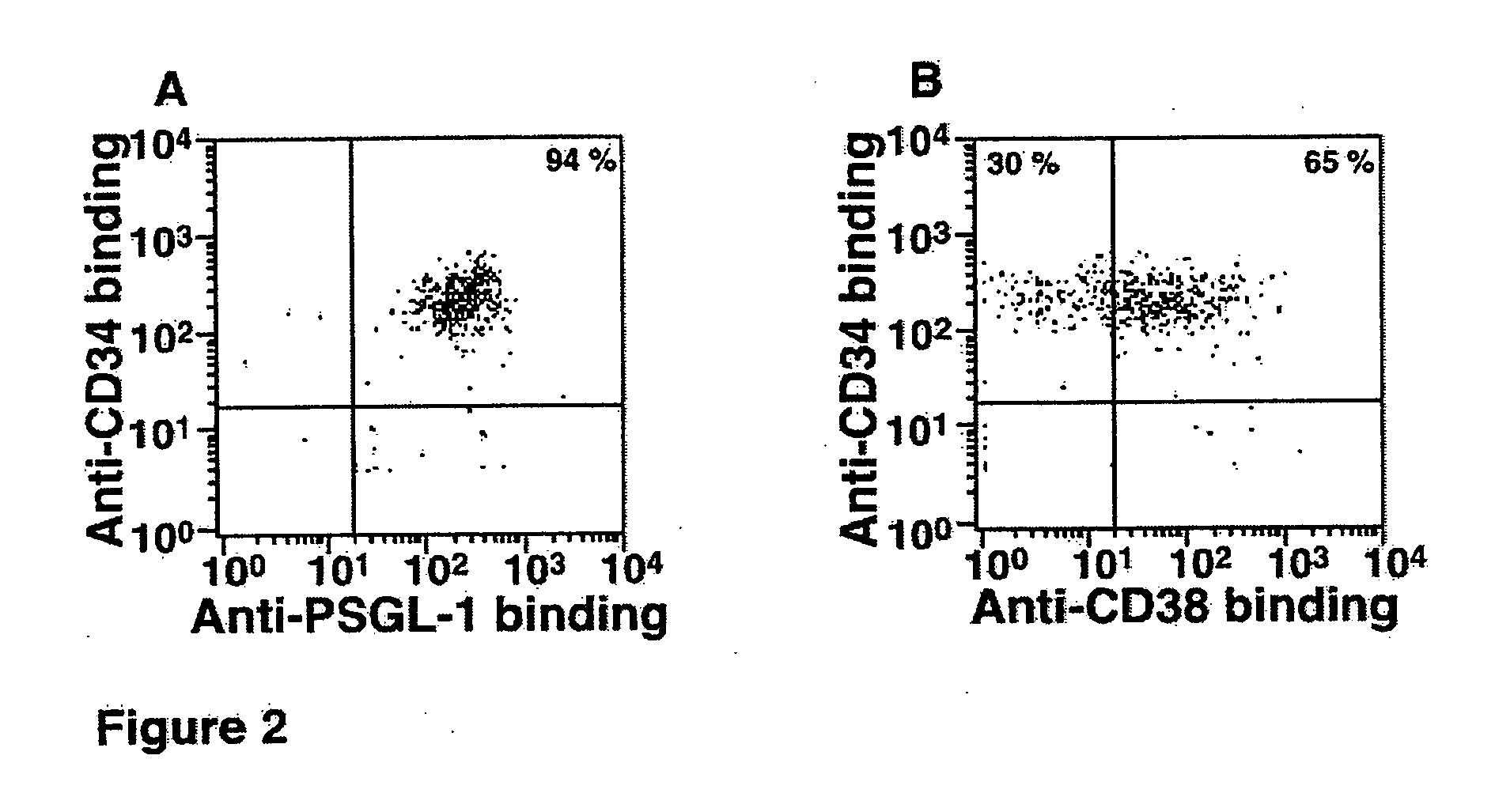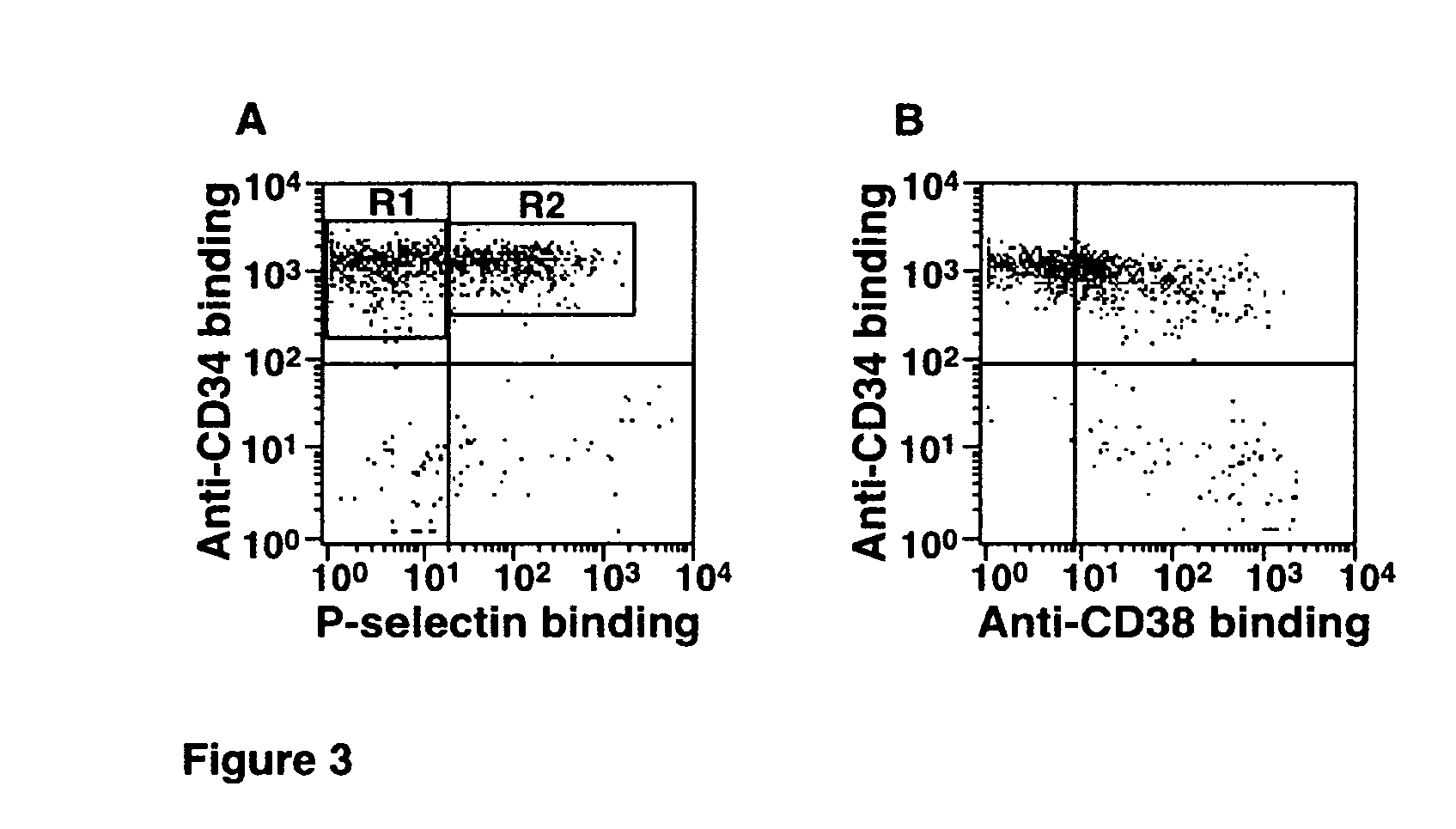Hematopoietic stem cells treated by in vitro fucosylation and methods of use
a technology of hematopoietic stem cells and in vitro fucosylation, which is applied in the direction of drug composition, biocide, extracellular fluid disorder, etc., can solve the problems of limiting the use of cord blood hscs for transplantation, and the inability to find a fully human leukocyte antigen (hla)-matched unrelated donor, so as to reduce the expression of surface protein cd38, reduce bone marrow homing ability, and enhance binding
- Summary
- Abstract
- Description
- Claims
- Application Information
AI Technical Summary
Benefits of technology
Problems solved by technology
Method used
Image
Examples
Embodiment Construction
[0024] The present invention in one embodiment contemplates a method of treating HSCs comprising providing a quantity or population of HSCs which lack or have reduced expression (less than the normal level of expression of CD38) of surface protein CD38, and treating the quantity or population of HSCs in vitro with an α1,3 fucosyltransferase and a fucose donor, wherein the HSCs so treated have enhanced binding to P-selectin or E-selectin over the untreated HSCs. Furthermore, the untreated HSCs are typically characterized as predominantly comprising PSGL-1 or other selectin ligands which do not adequately bind to P-selectin or E-selectin. The PSGL-1 or other selectin ligands which occur on the CD38low / − HSCs lack or have reduced numbers of fucosylated glycans, such as O-glycans, and may for example, have PSGL-1 which have core-2 O-glycans which comprise NeuAcα2,3Galβ1,4GlcNAc but which lack a fucose in α1,3 linkage to the GlcNAc. The CD38low / − HSCs, in their untreated state prior to f...
PUM
| Property | Measurement | Unit |
|---|---|---|
| fluorescence threshold | aaaaa | aaaaa |
| fluorescence threshold | aaaaa | aaaaa |
| fluorescence threshold | aaaaa | aaaaa |
Abstract
Description
Claims
Application Information
 Login to View More
Login to View More - R&D
- Intellectual Property
- Life Sciences
- Materials
- Tech Scout
- Unparalleled Data Quality
- Higher Quality Content
- 60% Fewer Hallucinations
Browse by: Latest US Patents, China's latest patents, Technical Efficacy Thesaurus, Application Domain, Technology Topic, Popular Technical Reports.
© 2025 PatSnap. All rights reserved.Legal|Privacy policy|Modern Slavery Act Transparency Statement|Sitemap|About US| Contact US: help@patsnap.com



